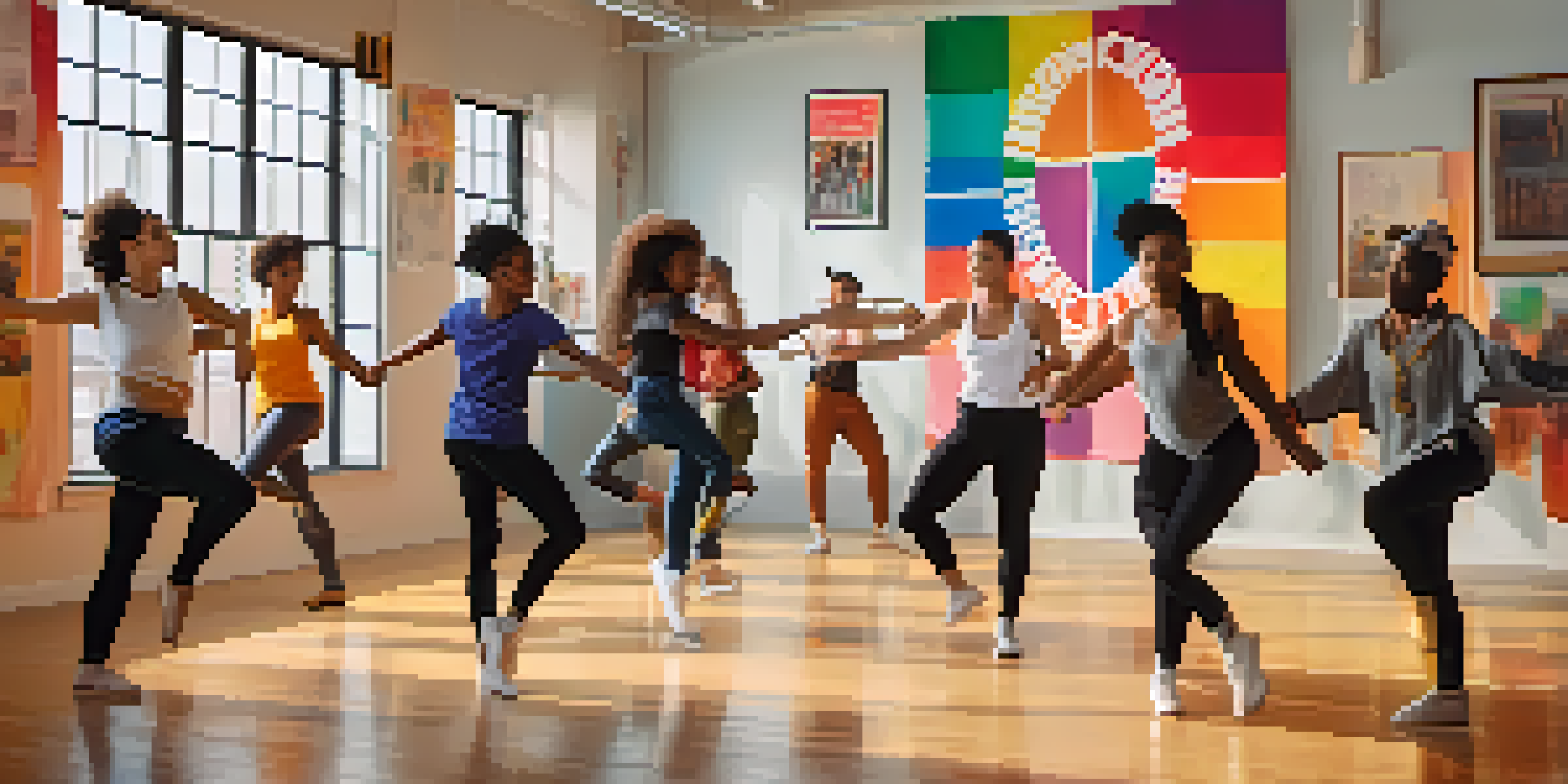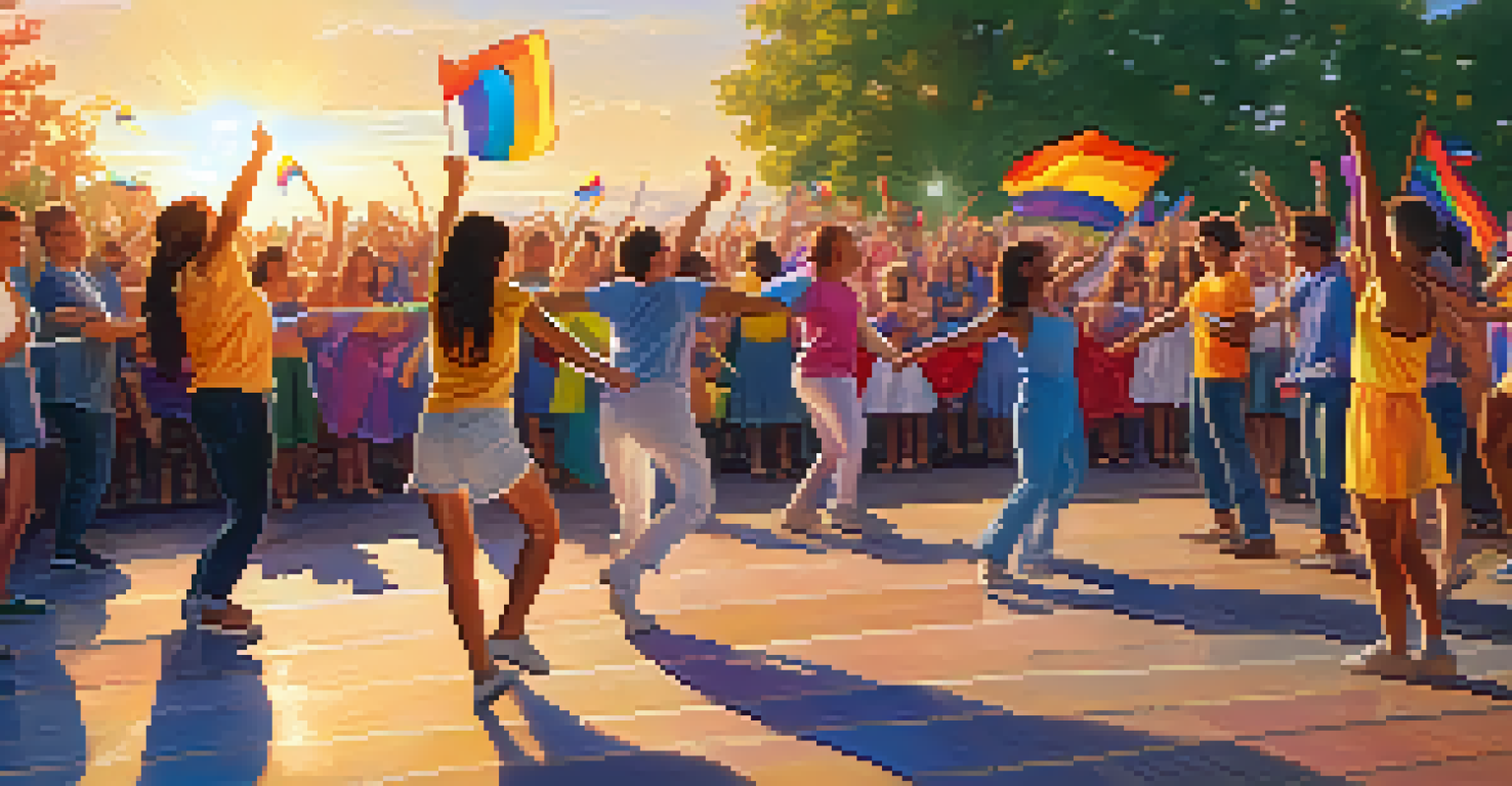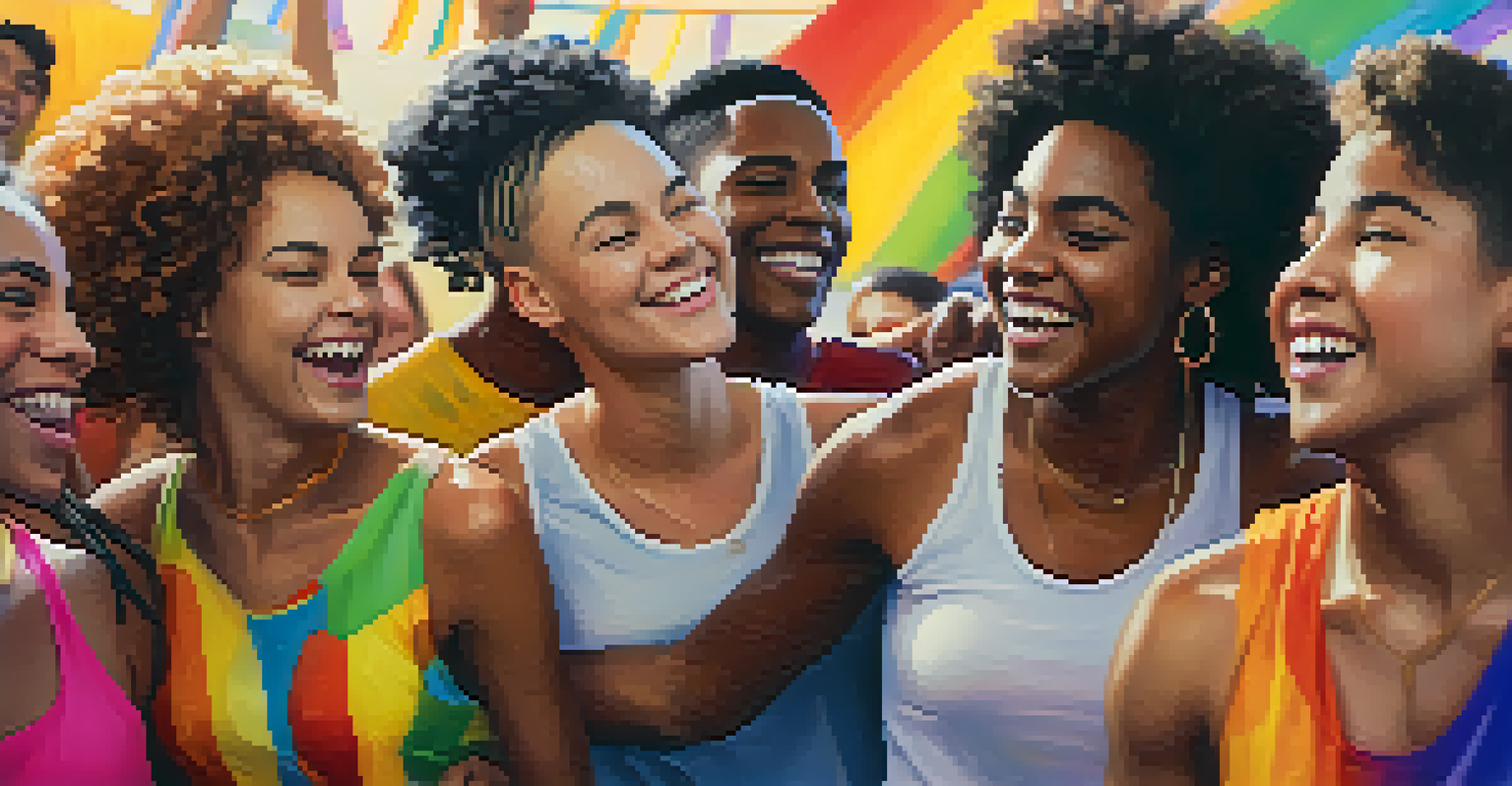Creating Safe Spaces: Dance Programs for LGBTQ+ Youth

The Importance of Safe Spaces for LGBTQ+ Youth
Safe spaces play a vital role in the lives of LGBTQ+ youth, providing environments where they can express themselves freely without fear of judgment. These spaces help cultivate a sense of belonging and community, which is crucial during the often tumultuous teenage years. When young individuals feel safe, they are more likely to explore their identities and develop self-confidence.
Dance is the hidden language of the soul.
In the context of dance programs, these safe spaces allow participants to express their emotions through movement, creating a unique form of communication. Dance transcends words, offering a powerful outlet for feelings that may be difficult to articulate. This can be especially beneficial for LGBTQ+ youth, who may struggle with societal expectations and internal conflicts regarding their identities.
Moreover, dance programs often encourage collaboration and support among peers, fostering friendships and mentorships that can last a lifetime. These connections help reinforce the idea that LGBTQ+ youth are not alone in their experiences, reducing feelings of isolation. Ultimately, safe spaces in dance programs contribute to the overall well-being and resilience of LGBTQ+ youth.
How Dance Programs Promote Self-Expression
Dance is an art form that inherently encourages self-expression, allowing individuals to share their stories through movement. For LGBTQ+ youth, participating in dance can be a liberating experience, helping them to embrace their identities and express their uniqueness. Whether it's through contemporary dance, hip-hop, or ballet, each style offers different avenues for exploration and expression.

Moreover, dance programs often incorporate themes of acceptance and diversity, reinforcing the importance of embracing differences. By engaging with music and choreography that reflect their experiences, LGBTQ+ youth can find empowerment in their art. This not only enhances their self-esteem but also promotes a sense of pride in their identities.
Safe Spaces Boost LGBTQ+ Confidence
Safe spaces in dance programs allow LGBTQ+ youth to express themselves freely, fostering confidence and self-acceptance.
The act of moving to music can also serve as a therapeutic outlet, helping young individuals process their feelings and experiences. Dance allows them to channel emotions like joy, sadness, or anger in a constructive way. By providing a platform for this emotional exploration, dance programs become essential tools for healing and self-discovery.
Building Community Through Dance Programs
Community is at the heart of any successful dance program, especially when it comes to supporting LGBTQ+ youth. These programs often foster a sense of camaraderie among participants, creating bonds that extend beyond the dance floor. Through group classes and collaborative performances, young dancers learn the value of teamwork and mutual support.
Everyone deserves to have a safe space where they can be their true selves.
Additionally, dance programs can serve as a hub for LGBTQ+ youth to meet like-minded individuals who share similar experiences. This shared understanding can lead to powerful friendships that provide emotional support during challenging times. When youth feel connected to a community, they are more likely to thrive both personally and artistically.
Furthermore, community-building initiatives often extend beyond the dance studio, with events like showcases and fundraisers that engage the wider public. These opportunities allow LGBTQ+ youth to share their talents and stories with a broader audience, promoting visibility and advocacy. In this way, dance programs not only empower individuals but also contribute to a larger movement for acceptance and equality.
The Role of Experienced Instructors in LGBTQ+ Dance Programs
The instructors in dance programs for LGBTQ+ youth play a crucial role in creating a safe and inclusive environment. Experienced teachers understand the unique challenges that LGBTQ+ youth face and are often trained to handle sensitive topics with care and respect. This expertise helps lay the foundation for a supportive atmosphere where students can feel comfortable being themselves.
Moreover, these instructors often serve as mentors, guiding young dancers through both their artistic and personal journeys. By sharing their own experiences and challenges, they can inspire youth to embrace their identities and pursue their passions. This mentorship aspect is invaluable, as it provides youth with role models who understand their struggles and triumphs.
Dance Programs Build Community
Dance programs create a sense of community among LGBTQ+ youth, providing emotional support and lasting friendships.
Additionally, skilled instructors can design curriculum that reflects the diversity of their students. By incorporating diverse dance styles and themes, they make the program more relevant and engaging for LGBTQ+ youth. This thoughtful approach not only enhances the learning experience but also reinforces the importance of representation in the arts.
Showcasing Talent and Building Confidence
Performance opportunities are a key component of dance programs, providing LGBTQ+ youth with a chance to showcase their talents. These moments of public expression can be incredibly empowering, helping young dancers gain confidence in their abilities and their identities. Standing on stage, they not only share their art but also affirm their place in the world.
Participating in performances also teaches valuable skills, such as teamwork, discipline, and the ability to handle constructive feedback. For many LGBTQ+ youth, these experiences can serve as a stepping stone to greater self-esteem and resilience. The applause and support from peers and audiences create a positive feedback loop that encourages further participation.
Moreover, showcases can be tailored to highlight the unique stories and experiences of LGBTQ+ individuals. By centering these narratives, dance programs not only celebrate diversity but also educate the audience about the challenges faced by the LGBTQ+ community. This dual purpose of performance—entertainment and advocacy—makes it a powerful tool for change.
The Impact of Dance on Mental Health
Engaging in dance has been shown to have significant benefits for mental health, particularly for LGBTQ+ youth who often face higher rates of anxiety and depression. The physical activity involved in dance releases endorphins, which can improve mood and alleviate stress. In a supportive dance environment, these benefits are amplified, as participants feel safe to let go and enjoy the movement.
Additionally, dance provides an outlet for processing complex emotions, allowing youth to express feelings that may be difficult to articulate otherwise. This emotional release can be therapeutic, helping them navigate their experiences and challenges more effectively. By channeling their emotions into dance, they can find relief and clarity.
Experienced Instructors Matter
Skilled instructors play a crucial role in creating inclusive environments, mentoring youth and enhancing their learning experiences.
Moreover, the sense of community found in dance programs can combat feelings of isolation, a common struggle for LGBTQ+ youth. When individuals feel connected to others who understand their experiences, it can significantly reduce feelings of loneliness. This supportive network not only boosts mental health but also fosters resilience and personal growth.
Creating Inclusive Dance Programs: Best Practices
To create truly inclusive dance programs for LGBTQ+ youth, it's important to implement best practices that prioritize safety and acceptance. This begins with establishing clear anti-discrimination policies and ensuring all staff are trained in inclusivity. By fostering an environment of respect and support, programs can create a welcoming space for all participants.
Additionally, incorporating diverse perspectives into the curriculum is essential. This includes teaching a variety of dance styles that reflect the cultural richness of the LGBTQ+ community. By embracing diversity in both teaching and performance, programs can better engage students and celebrate their unique identities.

Lastly, ongoing evaluation and feedback from participants can help improve the program continuously. Actively seeking input from LGBTQ+ youth allows programs to adapt and grow in response to their needs. This commitment to inclusivity not only enhances the experience for current participants but also sets a positive example for future generations.